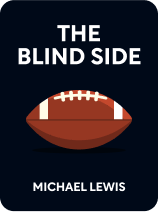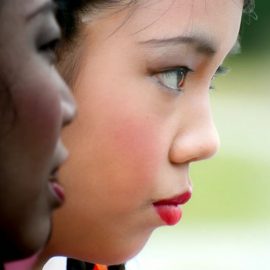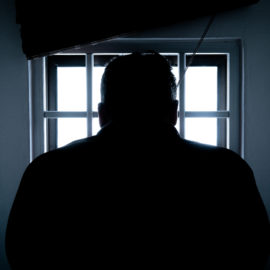

This article is an excerpt from the Shortform book guide to "The Blind Side" by Michael Lewis. Shortform has the world's best summaries and analyses of books you should be reading.
Like this article? Sign up for a free trial here .
What is Hurt Village in The Blind Side? How did Michael Oher go from Hurt Village to Briarcrest, and later, the NFL?
Hurt Village in The Blind Side is the difficult neighborhood in Memphis where Michael Oher grew up. Michael is able to leave Hurt Village when he gets into a school across town, and later moves in with the Tuohy family.
Read more about Hurt Village in The Blind Side and how Michael eventually left.
Michael Oher’s Childhood: Hurt Village in The Blind Side
Hurt Village in The Blind Side was a harsh environment with close to 1,000 residents. There were no nuclear families, many adults didn’t have jobs, and 75% suffered from mental illness, including drug addiction. Most of the village was under the control of Delvin Lane and his gang, the Gangster Disciples (GD).
Michael stopped attending school for 18 months after arriving at Hurt Village, fearing the police would find him there and take him away again. He didn’t realize the Department of Children’s Services had already given up on placing him in a foster home. He lived a free life with no supervision or obligations, and he remembers it as being fun. Michael had few to no friends and spent a lot of time alone. His favorite pastime was shooting hoops from morning to night, what he considered to be training for his future. Michael had a dream—he wanted to be the next Michael Jordan.
Michael’s dream started in 1993 after he watched the Bulls guard make the Phoenix Suns look like a high school team. He was fast and agile, and he believed he had what it took to make it to the NBA. He made a vow to be as great as Jordan one day. No one in the world thought this little boy had anything to offer the world, but he knew differently. He knew he was destined to be a rich and famous athlete.
Michael grew quickly and got stronger, but inside, he was still a quiet and shy boy. There were only two people that Michael hung out with: a boy his age named Craig, who also loved to play basketball, and a man 10 years older named Big Zach. Zach had been a hot high school football prospect and had what would become the quintessential left tackle body. Many people mistook Michael and Big Zach for brothers because they were so similar in shape and features.
Like Michael, Tom Lemming had touted Zach as one of the brightest offensive tackles in the country, and scholarship offers rolled in. But unlike Michael, Zach had a large group of friends and a girlfriend. After he returned from a visit to Florida State, where the coach had his name already stenciled on a locker, they convinced him he wasn’t good enough for the NFL and that college was a waste of time. He listened and dropped out of school. Several years later, Zach regretted his decision. He didn’t realize how close he’d been to making it.
Perhaps it was this future regret looming in his subconscious that caused Big Zach to take Michael under his wing. He took him to the basketball court and saw that Michael was good and handled the ball well for his size. People started calling Michael “Big Mike,” but he hated it because it didn’t match the image he had in his mind. Without pictures or mirrors around, he didn’t have a true understanding of how big he was getting. He wanted to be light as air and fast with cat-like reflexes, like Jordan, so that’s who he believed he was.
To keep the illusion alive, Michael wore oversized clothes and shoes a size too small. He worked out, believing he was slimming down, and only played guard on the court to maximize his quickness. This delusion also kept him from realizing how strong he was becoming. He was truly shocked one day when he picked up a kid while horsing around like it was nothing. Still, he refused to be big. He was small and lithe in his mind, and his body followed his mind’s commands.
A Father Figure for Michael
During this time, Michael still wasn’t attending school most days, but his teachers kept moving him up a grade without concern. He was unencumbered and content, but everything changed before his 15th birthday when Big Tony found him on the basketball court at Hurt Village according to The Blind Side.
Tony took Michael in and enrolled him into Westwood High School, where Tony’s son, Steven, played basketball. Michael played both basketball and football at the school, but he didn’t care much for football. Still, Big Tony saw how big Michael was getting and knew he could attract attention from colleges with his size alone. After leaving Hurt Village, The Blind Side star hoped to succeed.
Around this time, Tony’s mother died, and he fulfilled his promise to her to take Steven across the city to get a Christian education. And if he was already driving Steven to Briarcrest, he may as well take Big Mike, too.
Michael remembers those first months at Briarcrest as days of confusion. He’d never been around white people before and couldn’t understand their way of life. They were all overly friendly, seemingly fragile, and careless with their possessions.
Steven had noticed this, too, and one day, the two boys came home with Big Tony and revealed a stash of stolen items from the boys’ locker room. Tony sat Steven and Michael down and explained the ways of their new world to them. It wasn’t like the hood. They had to stay out of trouble and follow the rules because once a black boy caused trouble in a white world, he’d never be accepted again.
After growing up in Hurt Village, The Blind Side shows Michael Oher’s success story. But his struggles didn’t stop the moment he left Hurt Village.

———End of Preview———
Like what you just read? Read the rest of the world's best book summary and analysis of Michael Lewis's "The Blind Side" at Shortform .
Here's what you'll find in our full The Blind Side summary :
- How Michael Oher went from the projects in Memphis to the NFL
- Why the combination of size and speed became essential for football stars
- How Oher was taken in by the wealthy Tuohy family






